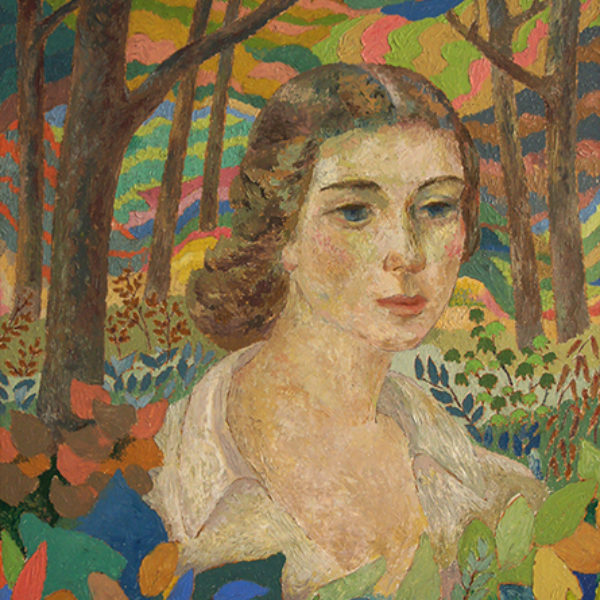Fred Biesel
b. 1893, Philadelphia, PA - d. 1954, Chicago, IL
Fred Biesel was born in Philadelphia in 1893 and raised in Newport, Rhode Island, the son of marine artist Charles Biesel. Fred Biesel studied at the Rhode Island School of Design, starting in 1913 and graduating in 1915. From 1915-16 he studied independently with urban realist painter Robert Henri. After serving in the U.S. Naval Reserve from 1916 to 1919, Biesel moved to Chicago, where his father had become a resident a few years earlier. The younger Biesel completed his studies at the Art Institute of Chicago (SAIC), working with George Bellows and Randall Davey. There, he met his wife, Frances Strain. He went to Santa Fe to study with John Sloan in summer 1920, and returned to New York with Strain. Biesel and his wife lived in John Sloan’s studio, and they were greatly influenced by Sloan’s circle of urban realists and the Society of Independent Artists.
Although a conservative artist pictorially, Biesel and his wife were both very important figures on the Chicago art scene. They brought ideas about democratic art exhibition from New York to Chicago when they returnedin 1921. They organized independent exhibition groups, such as the Chicago No-Jury Society of Artists and another Chicago group known as the Ten. Biesel and Strain lived in the 57th Street art colony and were active in the growing community of young, avant-garde Chicago artists that included Emil Armin, Hazel and Vin Hannell, George Josimovich, Stanislaw Szukalski, and writers Sherwood Anderson and Ben Hecht.
Experimenting with various postimpressionist styles, these artists frequently painted colorful and expressionistic views of the industrial and rural landscapes they found south of Chicago along the Indiana shore of Lake Michigan. For example, Biesel’s ink drawing, The Lagoon (Jackson Park), depicts the tangled undergrowth and expressive trees around the water. His portrait of Strain in The Woods displays a modernist and fauvist influence; the fancifully colored sky, trees, and landscape in the background and collection of foliage in the foreground, frame his wife’s gentle face. In the 1950s, Biesel continued to make figural work (even though it was then out of style) infused with a modernist sensibility.
Biesel exhibited at the Art Institute of Chicago, the Chicago Society of Artists, and the Society of Independent Artists. He also participated in museum exhibitions in Rhode Island, New York, New Mexico, and New Jersey. At mid-career he was awarded a solo exhibition at the Art Institute of Chicago. From 1935–43, Biesel worked under the federal art program, and served as director of Illinois Art and Craft Project from 1941–43, as well as on the faculty of the Layton Art School in Milwaukee 1946–53. He died in Chicago in 1954.
Lisa Meyerowitz
References
Biesel Family Papers, 1859–1983. Smithsonian Institution. Archives of American Art.
Biesel, Fred. Pamphlet file P-02664. Ryerson Library. Art Institute of Chicago. [1 item]
Greenhouse, Wendy, and Susan Weininger. Chicago Painting, 1895–1945: The Bridges Collection. Exh. cat. Springfield: University of Illinois Press and Illinois State Museum, 2004.
Hall, Michael D,. and Pat Glascock. Great Lakes Muse: American Scene Painting in the Upper Midwest, 1910–1960. Flint, MI: Flint Institute of Arts, 2003.
Jacobsen, J. Z. The Art of Today: Chicago, 1933. Chicago: L. M. Stein, 1932.

